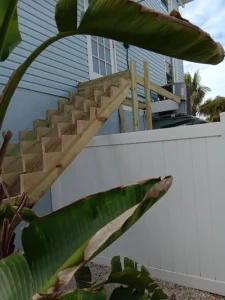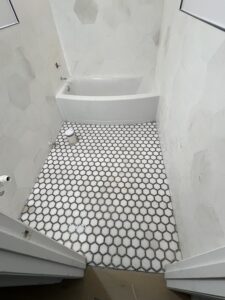
Have you wondered how to identify drywall texture on a wall or ceiling finish? Most likely not, unless you work as a drywall contractor or finisher. There are many different kinds of drywall textures, ranging from elegant white to surprisingly multi-patterned designs. If you’re thinking about adding a new texture to your home or just want to figure out which pattern to add to your wall, we’ve got you covered!
In this article, we’ll discuss the different types of drywall textures and valuable insights to identify when you gaze them on a ceiling or wall.
What are the Different Types of Drywall Textures
A crucial and intricate aspect of repairing drywall is coordinating the texture. Understanding the various wall textures is crucial to a successful repair because, without a texture match, the crack would remain noticeable and unattractive long after the repair is finished.
Drywall textures can add visual interest to walls and ceilings, and there are various techniques to achieve different textures. Here are common types of drywall textures:
- Smooth Finish — This is a simple, flat finish achieved by applying a thin layer of joint compound and sanding it smooth. It provides a clean and modern look.
- Orange Peel —- This texture resembles the surface of an orange peel. It is achieved by spraying on a thin layer of joint compound and then lightly smoothing it out. The result is a slightly bumpy texture.
- Knockdown —- Similar to orange peel, the knockdown texture involves spraying on a joint compound and then using a trowel to flatten or “knock down” the peaks, creating a textured but flattened surface.
- Skip Trowel —- Skip trowel is a more pronounced texture where a joint compound is applied with a trowel in a random or sweeping motion, creating irregular patterns on the surface.
- Swirl — Swirl texture involves applying joint compound in a circular or swirled pattern using a trowel or a specialized brush. It creates a visually interesting and textured surface.
- Slap Brush (Slap Knockdown) —- This texture is achieved by slapping a brush onto the wet joint compound, creating a stippled or ridged pattern. It can be left as is or knocked down with a trowel for a smoother finish.
- Sand Swirl —- Sand swirl texture is created using a specialized brush that has a sand-like substance on it. The brush is used to create a pattern on the wet joint compound, resulting in a textured swirl effect.
- Crows Foot (Stomp Knockdown) — Crows foot texture is created by using a stomp brush or a texture roller to apply joint compound, and then it is knocked down with a trowel. This creates a pattern resembling the tracks of a crow’s foot.
How to Identify Drywall Texture
Trends evolve with time. Just as furnishings, flooring, colors, and other finishes are all following the trend of home improvement and decorations, so too is drywall texture. Learning how to identify drywall textures can be useful for various reasons, whether you’re matching existing textures for repairs or renovations. Here are four ways to identify drywall textures:
1. Visual Inspection —- Simply visually inspect the wall or ceiling surface. Different textures have distinct patterns. Look for variations in the texture, such as bumps, swirls, or patterns, to determine the type of texture used.
2. Touch and Feel —- Run your hand across the wall or ceiling to feel the texture. Smooth finishes and orange peel textures will feel relatively flat, while more pronounced textures like knockdown or skip trowel will have a bumpy or irregular feel.
3. Compare to Reference Guides —- Use reference guides or online resources that showcase different drywall textures. Many guides provide images and descriptions of common textures. By comparing the texture in question to these references, you may be able to identify the specific type.
4. Ask the Homeowner or Builder —- If possible, ask the homeowner or builder about the drywall texture used. They may have records or knowledge of the construction process, including the type of texture applied. They might also have documentation or leftover materials that can help identify the texture.
5. Photographic Comparison —- Take close-up photographs of the drywall texture and compare them to images in texture guides or online resources. This method can be particularly helpful when trying to match or identify a specific texture, as it allows for a detailed examination of the surface.
6. Use a Light Source —- Shine a light source, such as a flashlight or lamp, at an angle across the wall. The shadows created by the light can highlight the texture patterns, making it easier to identify subtle details that might be harder to see in regular lighting conditions.
7. Consult with Professionals —- If you’re having difficulty identifying the texture, consider consulting with a professional drywall contractor or a painter. Experienced professionals in the construction or painting industry may have encountered a wide range of textures and can provide valuable insights.
8. Test Patch —- If you’re attempting to match an existing texture, create a small test patch in an inconspicuous area. Apply joint compound or texture mix in a manner similar to the existing texture, and experiment until you achieve a close match. This allows you to practice and refine your technique before tackling a larger area.
9. Water Testing —- Lightly misting the wall with water can sometimes help bring out the texture. Water temporarily darkens the drywall, making the texture more visible. This method is especially useful for identifying subtle or faint textures that may not be immediately apparent under normal conditions.
10. Check Construction Records —- If available, check any construction or renovation records for information about the drywall installation. Builders or contractors may have documented the type of drywall texture used during construction. This information can often be found in project files, permits, or documentation provided by the original builders.
Keep in mind that sometimes a wall or ceiling may have a combination of textures, especially in older homes or areas with previous repairs. Using a combination of these methods can often help you accurately identify the drywall texture you are dealing with.

FAQs
What is the difference between orange peel and knockdown textures?
Orange peel and knockdown textures both involve spraying joint compounds onto the drywall, but they differ in the final step. Orange peel is left with a slightly bumpy texture, while knockdown involves flattening or “knocking down” the peaks of the texture with a trowel, resulting in a smoother finish.
Can I paint over textured drywall?
Yes, you can paint over textured drywall. However, it’s crucial to use the right type of paint and application technique. A flat or satin finish paint is often recommended for textured surfaces. Using a high-quality roller can help distribute the paint evenly over the texture.
What causes cracks or imperfections in drywall textures?
Cracks or imperfections in drywall textures can result from various factors, including settling of the building, temperature fluctuations, or poor installation. To prevent or repair these issues, it’s essential to address the underlying cause, apply proper joint compounds, and follow best practices for texture application.
Can I change the drywall texture in a room?
Yes, you can change the drywall texture in a room. This typically involves scraping off the existing texture, applying a new texture, and then finishing with paint. It’s essential to properly prepare the surface and follow the appropriate steps for the desired texture.
Conclusion
Hopefully, this post has given you valuable information on how to identify drywall texture. If you need professional drywall installation or advice on the best texture to apply on your wall or ceiling, our skilled contractors have the experience and understanding to transform your dull, boring walls into a vibrant interior. Book a free consultation today.





